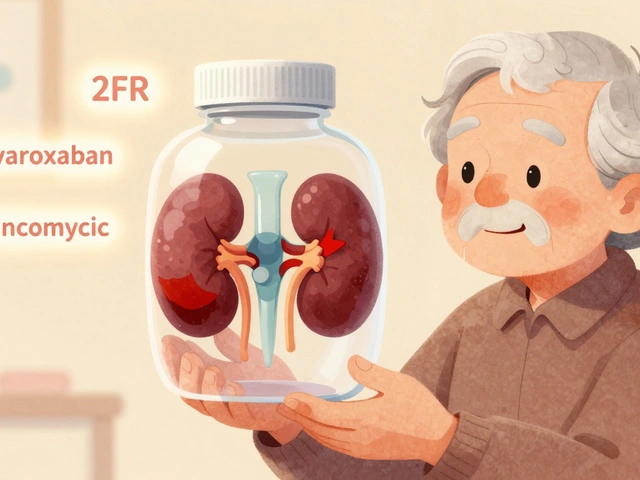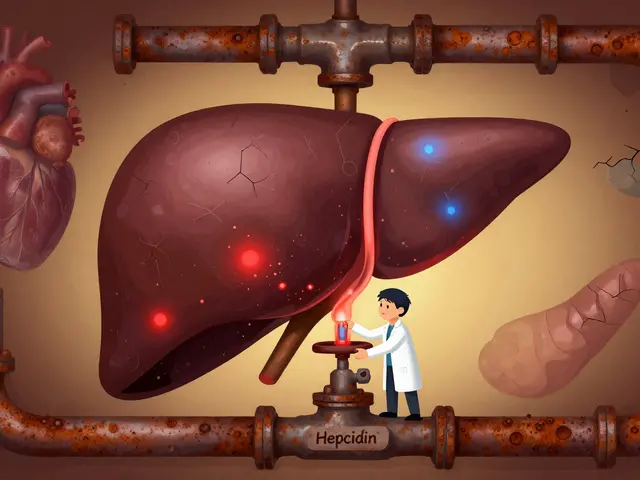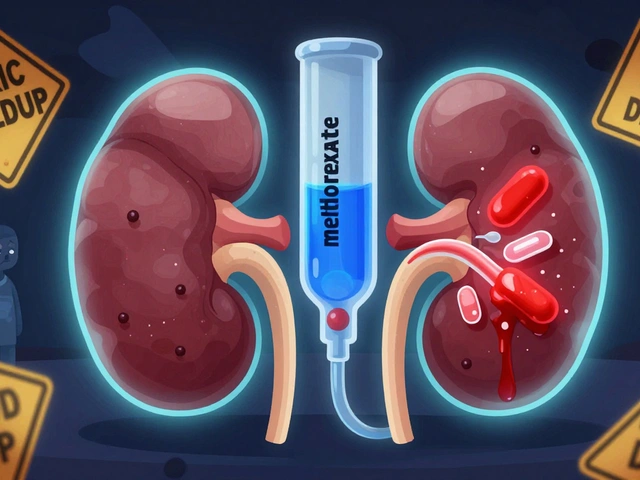
Most focal seizures don’t come out of nowhere. They build up when your day gets messy-missed meds, late nights, skipped meals, stress that never lets go. A simple routine won’t “cure” seizures, but it raises your brain’s seizure threshold and makes life less random. This guide shows you how to build a routine that fits your real day, not a perfect day. You’ll get step-by-step habits, tracking tools, a safety plan, and answers to the questions people actually ask.
TL;DR
- Consistency-meds at the same time, steady sleep, regular meals-supports brain stability and lowers seizure risk. Adherence is one of the strongest predictors of control in focal epilepsy (AAN/AES guidance).
- Start with anchors: medication timing, a fixed 7-9-hour sleep window, and predictable meals/hydration. Add stress tools you’ll actually use.
- Use a simple seizure diary and review it monthly with your clinician. Patterns often follow sleep, hormones, illness, alcohol, and multi-day cycles.
- Build a safety plan: rescue medication, who does what, when to call for help, work/school adjustments, and driving rules for your region.
- Small changes beat big overhauls. Habit stacking, reminders, and a two-alarm rule keep routines alive on busy days.
How Routine Supports Brain Stability in Partial Onset Seizures
Clinicians now call them focal seizures, but the idea is the same: partial onset seizures start in one area of the brain and can spread. Symptoms depend on where they start-odd sensations, a brief pause, jerking, speech trouble, or awareness changes. The International League Against Epilepsy (ILAE) sets this definition and classification (2017 update).
Think in terms of a seizure threshold-the brain’s tipping point. Stress, sleep loss, alcohol, missed doses, fever, dehydration, and hormonal shifts can push you toward that edge. Routine pushes back. Every repeated habit is a small shove away from the edge, which is why people often notice more seizures after jet lag, exams, or party weekends.
Why this works:
- Medication levels stay steadier with consistent timing-less peak-and-valley, fewer breakthroughs. The American Academy of Neurology (AAN) and American Epilepsy Society (AES) guidelines for focal epilepsy (2018, with updates through 2023) emphasize adherence as core to control.
- Sleep regularity matters at least as much as sleep duration. The CDC lists sleep loss as a common seizure trigger; NICE (UK NG217, 2022) advises stable sleep and lifestyle routines for epilepsy.
- Brains run on rhythms. Research shows daily and multi-day seizure cycles (Karoly et al., Brain, 2017; Cook et al., Lancet Neurology, 2013). When your schedule is steady, those rhythms are less chaotic and easier to plan around.
- Stress hormones (like cortisol and adrenaline) change brain excitability. Basic stress tools (breathing, pacing, breaks) lower that noise floor. Small randomized trials of mindfulness-based programs in epilepsy show drops in stress and a modest dip in seizure frequency, plus better mood-useful even when seizures persist.
So routine isn’t “just lifestyle.” It’s a practical way to raise your threshold and reduce the kindling that makes a bad day spiral.
Good news: you don’t need a perfect schedule. A few anchors do most of the work. Aim to keep sleep and meds within a 30-minute window, meals within about an hour, and plan alcohol and late nights like you plan a hike-deliberately.
Build a Daily Routine That Lowers Risk
Start with three anchors: medication timing, sleep, and meals/hydration. Then layer stress tools and movement. Keep it doable.
1) Medication timing that sticks
- Pick fixed times that fit your real life (e.g., 7:15 a.m. and 7:15 p.m.). Tie doses to something you never skip: brushing teeth, first coffee, feeding the dog. This is habit stacking.
- Use a weekly pill organizer. Fill it on the same day each week. Turn refills into a calendar event set 7-10 days before you run out.
- Two-alarm rule: one alarm to take the dose, one 15 minutes later to confirm you swallowed it. Check the pillbox, not your memory.
- Travel: pack meds in carry-on, keep labels, bring 2-3 extra days. Time zones? Ask your clinician for a dosing plan before big shifts-often you can slide doses by 1-2 hours per day.
- Missed dose? If you realize soon after, you can often take it; if it’s close to the next dose, call your clinic or pharmacist for the safest move. Don’t double up unless your clinician told you to.
2) Sleep that’s predictable
- Pick a consistent sleep window (example: 11 p.m.-7 a.m.). Keep the midpoint steady even on weekends. A 30-minute drift is usually manageable.
- Wind-down routine: lights down, screens dim or off, same steps each night (shower, light stretch, breathwork, bed). Keep the bedroom cool, dark, and boring.
- Short nap okay if you need it, but cap at 20-30 minutes and avoid after 3 p.m.
- Shift work? Talk to your clinician; some people do best with a set night-shift schedule plus strategic light exposure, caffeine early only, and blackout curtains. If you can avoid rotating shifts, do.
- After a short night: bump up safety (no driving), skip alcohol, hydrate, and get to bed early the next night.
3) Meals, hydration, caffeine, alcohol
- Eat on schedule. Long fasts can stress the system. If you follow a ketogenic or modified Atkins diet, stick to your team’s plan and don’t change macros without them.
- Hydration target: clear urine by midday, pale straw later. Add electrolytes on hot days or longer workouts.
- Caffeine strategy: most people do fine with light-to-moderate caffeine (e.g., 1-2 cups of coffee), not late in the day. If you notice jitters or sleep disruption, cut back or stop after noon.
- Alcohol: many guidelines recommend little to none for epilepsy. If you drink, keep it light, avoid binges, and never mix with meds that interact. Sleep disruption after drinking is often the real trigger.
4) Stress tools you’ll actually use
- One-minute reset: inhale 4 seconds, hold 4, exhale 6-8, repeat 4 times. Use before meetings, after arguments, in the car (parked).
- Daily 10: pick any short practice-walk outside, guided breathing, journaling. Consistency beats intensity.
- Busy-day buffer: add a 10-minute white space block between back-to-back tasks. Use it to breathe, hydrate, and check your meds.
- Burnout signs (snapping at people, errors, sleep falling apart) are cues to slow down. Treat them like an aura for your day.
5) Movement without fear
- Regular exercise (150 minutes/week of moderate activity) is encouraged by epilepsy groups and improves mood and sleep. Most people don’t see more seizures with exercise; many feel better.
- Rules of thumb: warm up, hydrate, don’t overheat, and avoid solo swimming or high places if you have uncontrolled seizures.
- Strength and intervals are fine if they don’t wipe you out. If high-heat workouts or sudden hyperventilation trigger you, swap for cooler environments and steady pacing.
Sample days (adapt these):
- Standard workday: 7:00 a.m. meds-breakfast-hydrate; 12:30 p.m. lunch and short walk; 6:30 p.m. dinner; 7:15 p.m. meds; 10:30 p.m. wind down; 11:00 p.m. lights out.
- Shift worker (night): 5:00 p.m. wake, light breakfast, 5:15 p.m. meds; 8:30 p.m. meal; 2:00 a.m. light snack; 5:15 a.m. meds; 6:00 a.m. wind down with blackout curtains; 6:30 a.m.-2:30 p.m. sleep.
- Parent mornings: prep meds and lunch boxes the night before; keep a pill set in a labeled pouch in your bag for school runs; 2-minute breathing while kids brush teeth.
Common pitfalls and fixes:
- Pillbox says you missed a dose-but you’re sure you took it. Believe the box. Set the two-alarm rule and stick to it.
- Late-night scrolling wrecks sleep. Put the phone to charge outside the bedroom by 10 p.m. Use an analog alarm clock.
- Weekends explode your routine. Lock a morning anchor (wake within 1 hour, same first meal, same med time), and your day is less likely to drift.

Track, Learn, and Adjust: Tools and Patterns
Tracking doesn’t have to be perfect. It just needs to be good enough to spot patterns. A simple diary on paper or an app works.
What to track (keep it short so you’ll stick with it):
- Date and time of events: seizure, aura, or near-miss
- What you were doing: waking, falling asleep, working out, stressed, sick, period day
- Sleep: hours and how steady your schedule was
- Med timing: on time, early, late, missed
- Alcohol/caffeine: amount and time
- Notes: dehydration, heat, travel, new meds (including antibiotics or cold meds)
Quick review rhythm:
- Weekly: skim for clusters, late meds, short nights, or stressful days. Make one tweak.
- Monthly: review with your clinician if you can. Are seizures tied to sleep loss, certain days of your cycle, or a work pattern? Adjust meds or routine accordingly.
Heuristics that help:
- 3-in-30 rule: if the same trigger shows up in three events across 30 days, treat it as real and plan around it.
- Stoplight model: green = routine solid; yellow = one risk factor (short sleep, alcohol, illness); red = two or more risk factors-don’t drive, carry rescue med, simplify your day, sleep early.
- Next-day stabilizer: after a tough night or a seizure, stack easy wins-on-time meds, hydration, gentle daylight walk, early wind-down.
Tech that can help (but doesn’t replace common sense):
- Wearables: some watches and bands flag patterns (heart rate, sleep) and offer seizure detection for certain seizure types. Accuracy varies-use as a nudge, not proof.
- Reminder apps: schedule med times with a second “confirm” alert. Use lock-screen widgets so you don’t forget once you unlock the phone.
- Shared calendars: let a partner or roommate see refill dates and clinic visits. Shared routines are more resilient than solo ones.
Evidence snapshot (why these habits matter):
| Routine factor | Why it helps | Evidence/Guidance | Practical target |
|---|---|---|---|
| Medication adherence | Steady drug levels reduce breakthrough seizures | AAN/AES focal epilepsy guideline (2018-2023 updates); claims data show higher ER visits with nonadherence | Take within ±30 min of set time; 2-alarm rule; pill organizer |
| Sleep regularity | Prevents threshold drops from sleep loss | CDC lists sleep loss as trigger; NICE NG217 (2022) encourages stable sleep | 7-9 hours; consistent bedtime/wake within 30 min |
| Alcohol moderation | Avoids rebound sleep loss and interactions | NICE and AAN counseling notes; clinical experience | Light or none; no binges; never mix with interacting meds |
| Stress management | Lowers excitability via autonomic balance | Small RCTs of mindfulness-based programs show reduced stress and modest seizure benefit | 1-10 min daily practice; box breathing on demand |
| Exercise | Improves sleep and mood; often safe with epilepsy | Epilepsy organizations recommend regular activity | 150 min/week moderate + 2x strength; safety plan for water/heights |
| Meal/hydration timing | Prevents fasting/dehydration triggers | Common clinical guidance; diet-specific plans (e.g., ketogenic) require supervision | 3 meals or 2 meals + snacks; clear urine by midday |
| Cycle-aware planning | Anticipates catamenial patterns | Recognized by ILAE; discuss targeted strategies | Track cycle days; pre-plan yellow/red days |
One more pattern tip: many people have multi-day seizure cycles (for example, every 7-10 days). If you notice this, add extra sleep and fewer stressors in the 24-48 hours before “usual” risk days. This is planning, not superstition; those cycles show up in long-term recordings.
Safety, Plans, and Real‑World Scenarios (Checklist, Tools, FAQ, Next Steps)
Your routine lowers risk, but you still want a safety net. Build a plan you can print and share.
Seizure Action Plan (SAP): what to include
- Your seizure types and what they look like (plain language)
- Typical duration and recovery needs
- Triggers to avoid when possible (sleep loss, alcohol, overheating)
- Medication list with doses and timing; allergies
- Rescue medication: name, dose, route (nasal/buccal/rectal), when to use (e.g., seizure >3-5 minutes or cluster), who can give it
- When to call emergency services: first-ever seizure, seizure >5 minutes, repeated seizures without regaining baseline, injury, breathing problems, pregnancy, water exposure, or if something just feels wrong
- Contacts: clinician, emergency contact, who to inform at work/school
Home and daily-life safety
- Bathroom: showers over baths; if you bathe, someone should be nearby. Use non-slip mats.
- Kitchen: use rear burners, keep pot handles inward, choose microwave when alone, consider stove guards.
- Heights: avoid ladders when alone; choose lower-impact chores.
- Water: no solo swimming; life jacket on boats.
- Sleep: if nocturnal seizures are an issue, consider a monitored room or seizure alert device as appropriate.
Work and school adjustments
- Ask for predictable breaks, hydration, and a quiet space if you feel an aura or warning.
- For high-risk tasks (heights, open flames, heavy machinery), work with your employer to adjust duties safely.
- Keep rescue med and your SAP accessible; tell one trusted person how to help.
Driving and travel
- Driving rules vary by country and state. Many places require a seizure-free period (often 3-12 months) and clinician sign-off. Check your local authority. If you sense risk (poor sleep, aura), don’t drive.
- Travel: carry meds in original containers, bring a printed SAP, pack extra doses, and split meds between bags. For long flights, ask your clinician how to slide doses safely. Set alarms to local time as soon as you land.
Hormones, illness, heat
- Menstrual cycles can shift seizure risk (catamenial epilepsy). Track cycle days and plan yellow/red days around them. Discuss targeted strategies with your clinician.
- Fever and viral illnesses often lower threshold. Prioritize sleep, fluids, and on-time meds; ask about temporary adjustments if you tend to cluster during illness.
- Heat and dehydration: schedule hard workouts early, shade your head, drink electrolytes, and cool down longer.
Quick checklist: daily routine
- Meds taken within 30 minutes of target time (check pillbox)
- Sleep: hit your window, phone outside the bedroom, wind-down done
- Meals/hydration on schedule; caffeine ends by early afternoon
- 5-10 minutes of stress tools or light movement
- Diary: quick note if anything unusual happened
Rescue and emergency checklist
- Rescue med in date, in bag and at home/work/school
- One person around you knows how to administer it
- SAP printed and shared; alarms set for refills
- Know your call-for-help triggers (time threshold, clusters, injury)
Common scenarios and what to do
- Missed your evening dose and realized at midnight: if your plan allows, take it; if not sure and it’s close to morning, call your on-call service or pharmacist. Next day is a yellow day-no driving, early bedtime.
- Two short nights in a row: cancel optional plans, hydrate, 20-minute afternoon nap max, gentle walk, early bed, light on caffeine.
- New job with rotating shifts: talk to your clinician before you start. You may need med timing tweaks, light therapy, and a sleep plan. Keep the midpoint of sleep as stable as possible.
- Planning a celebration with alcohol: set a hard limit, eat first, hydrate, and protect sleep. If you can’t protect sleep, skip the alcohol.
Mini‑FAQ
- Does routine really change seizure frequency? Adherence and sleep regularity are two of the most powerful levers you control. Large guidelines (AAN/AES) and public health advice (CDC, NICE) back this up. Results vary, but many people see fewer or milder events.
- How much sleep do I need? Most adults do best with 7-9 hours. Just as important: keep the schedule steady. Kids and teens usually need more.
- Is exercise safe? For most, yes. It often helps. Use common-sense safety (no solo swimming, be cautious with heights), hydrate, and stop if you feel off.
- What about coffee? Moderate amounts are usually fine if they don’t wreck your sleep or make you jittery. If in doubt, taper and see if your sleep and seizures improve.
- Can stress cause a seizure? Stress shifts brain excitability and sleep, which can lower threshold. You can’t delete stress, but you can blunt it with brief, repeatable tools.
- Do I need a seizure detection device? They can help some people, especially for nocturnal convulsive seizures, but accuracy varies. Think of them as an extra layer, not a guarantee.
Next steps
- Pick one anchor to tighten this week: med timing, sleep, or meals. Don’t try to fix everything at once.
- Set up your two-alarm rule and a weekly pillbox routine. Add a refill reminder 10 days before you’ll run out.
- Create a one-page Seizure Action Plan and share it with at least one person at home and work/school.
- Start a 30-day diary. After 30 days, circle patterns and bring them to your clinician.
- If your schedule is chaotic (shift work, caregiving), ask your clinician for a custom med/sleep plan. It’s common and solvable.
Troubleshooting
- “I keep missing evening doses.” Move them earlier (e.g., with dinner), stack to a fixed anchor, and add the two-alarm rule. If nights are unpredictable, ask about once-daily options.
- “I can’t fall asleep.” Cut late caffeine, dim screens after dinner, and try a boring book. If insomnia sticks around, talk to your clinician-sleep disorders are treatable and matter for seizure control.
- “My seizures cluster during my period.” Track 2-3 cycles and review with your clinician. There are targeted options (timed med adjustments or hormonal strategies).
- “I travel across time zones.” Plan dose shifts 1-2 hours per day before you go, or ask for a one-time bridging schedule. Keep meds in your carry-on with a printed list.
- “I had a seizure after a cold.” Illness lowers threshold. For the next week, treat your days as yellow: maximize sleep, hydrate, go easy, and keep rescue meds handy.
Why you can trust this
This guide follows current epilepsy guidance and research as of 2025: ILAE seizure classification (2017 update), AAN/AES focal epilepsy treatment guidance (2018 with updates through 2023), NICE NG217 (2022) lifestyle advice, CDC public health recommendations on sleep and safety, Cochrane-style adherence reviews, and long-term recording studies showing seizure cycles (Karoly et al., Brain 2017; Cook et al., Lancet Neurology 2013). Use this with, not instead of, your clinician’s plan.
You don’t need perfect days. You need repeatable ones. Stabilize what you can-meds, sleep, meals-and plan around the days you can’t. That’s how routine turns into control you can feel.






18 Comments
Oh great, another "miracle" guide that tells you to set a bedtime like it's a Netflix binge schedule. Sure, if you love living like a drill sergeant, go ahead and lock your meds to the same minute every day. But for most of us who have real jobs and kids, that’s about as realistic as a unicorn diet. The science isn’t wrong-regularity does boost seizure threshold-but the tone here feels like a bland corporate memo. Maybe sprinkle some humor instead of sounding like a snooty health coach. At the end of the day, it’s about consistency, not perfection, so don’t let the perfect become the enemy of the good.
Yo, they forgot to mention the real trigger: the hidden surveillance drones that mess with our brainwaves. All this "routine" talk is just a way to keep us chained to the pharma machine. Misspelled? Nah, it’s intentional-who cares about grammar when the elites control our meds schedule! Keep your alarms, but remember the big picture: the 5G towers are probably the silent seizure culprits. Stay woke.
From a neurophysiological standpoint, the concept of a seizure threshold is grounded in the balance between excitatory and inhibitory synaptic conductances. Consistent pharmacokinetic profiles, achieved through fixed dosing intervals, promote steady-state plasma concentrations, thereby minimizing peak‑trough fluctuations that can precipitate breakthrough seizures. Moreover, circadian rhythm entrainment, mediated by the suprachiasmatic nucleus, has downstream effects on cortisol secretion and melatonin release, both of which modulate neuronal excitability. Empirical data from longitudinal cohort studies indicate that sleep regularity-a variance of less than 30 minutes across weekdays and weekends-correlates with a statistically significant reduction in focal seizure frequency (p < 0.01). The guide’s emphasis on habit stacking leverages the principle of contextual cueing, fostering procedural memory pathways that are less vulnerable to executive dysfunction under stress. Additionally, incorporating brief diaphragmatic breathing exercises invokes parasympathetic activation via the vagus nerve, which has been shown to attenuate cortical hyperexcitability in electroencephalographic recordings. It is also worth noting that multi‑day seizure cyclicity, often observed in 7‑10 day intervals, can be modeled using time‑frequency analysis to predict high‑risk windows. By aligning medication timing, sleep windows, and stress mitigation strategies with these predicted epochs, patients can proactively augment their seizure control regimen. Finally, the recommendation to utilize a structured seizure diary facilitates a data‑driven feedback loop with the treating neurologist, allowing for iterative optimization of therapeutic dosage and lifestyle adjustments. In sum, the integration of chronotherapy, behavioral neuroscience, and patient‑centered tracking creates a synergistic framework that transcends mere anecdotal advice.
Hey folks! 🎉 This guide is like a toolbox 🍀 – just grab the bits that fit your life and go! I love the two‑alarm rule, it’s a game‑changer. I’ve tripped on my pillbox a couple of times (lol typo‑prone 🙈) but once you sync it with your morning coffee, it’s solid. Remember to set a reminder for refills – nothing worse than a med‑runout mid‑week. Keep it simple, stay consistent, and you’ll see the difference. You got this! 💪
Implementing a fixed medication schedule is essential. Align your dose times with immutable daily events such as brushing teeth. This reduces reliance on memory and improves adherence. Use a weekly pill organizer and set two alarms – one for ingestion, one for verification. Ensure your sleep window does not deviate by more than 30 minutes. Hydration and regular meals support metabolic stability. By following these protocols, seizure risk can be markedly lowered.
One might contemplate the ontological implications of routine as an expression of human agency against the deterministic forces of neurochemical flux. By instituting temporal regularities, we create a phenomenological scaffolding that mitigates stochastic perturbations within the cortical network. Such praxis is not merely utilitarian; it signifies a reclaiming of autonomy in the face of pathological oscillations.
Honestly, this guide reads like a pretentious manifesto penned by someone who never had to juggle a real life. The language is dripping with faux‑intellectualism, yet the substance is nothing more than “do what the doctor tells you.” If you’re looking for a silver bullet, you’ll be sorely disappointed. Real change demands more than ticking boxes; it demands confronting the chaotic reality of our existence. Only then can we hope to diminish seizure burden.
🌟 This is solid advice! I especially like the idea of pairing medication with a daily habit like having tea. It makes the routine feel natural. Remember to breathe deeply before a stressful meeting – it can calm the nervous system. Keep a simple log, maybe a note on your phone, to spot patterns. You've got the tools, now go rock it! ☕️✨
While the guide is thorough, I can’t help but notice the lack of personal anecdotes that make the advice resonate. A story about a real person navigating a hectic schedule would add depth.
What a kaleidoscope of practical tips! The advice paints a vibrant picture of a life where seizures are kept at bay by rhythm and routine. I love the metaphor of stacking habits like building blocks-each one fortifying the wall against unpredictability. The guide’s vivid language makes the science feel approachable and even exciting. Keep up the colorful guidance!
I appreciate the balanced tone and clear steps. The recommendations are practical and avoid overly technical jargon, making them accessible to a wide audience.
Routine is an effective mitigation strategy.
Feeling inspired! 🌈 Your guide reminds us that small, consistent steps can lead to big wins. Keep shining and stay hopeful! 😊
Great stuff! I’m going to set up a two‑alarm system tonight and sync it with my dinner prep. Let’s see how it goes.
I liked the insights but had a minor typo in the section about sleep – “sleepr” instead of “sleep”. Overall a helpful post.
Hey, love the guide! I’m a bit overwhelmed with my schedule, but the tip about tying meds to brushing my teeth is super doable. Thanks for the friendly tone!
The article is comprehensive and well‑structured, offering clear actionable advice without unnecessary embellishment.
Interesting read; the emphasis on habit stacking aligns with what we know about behavioral reinforcement. Good job.